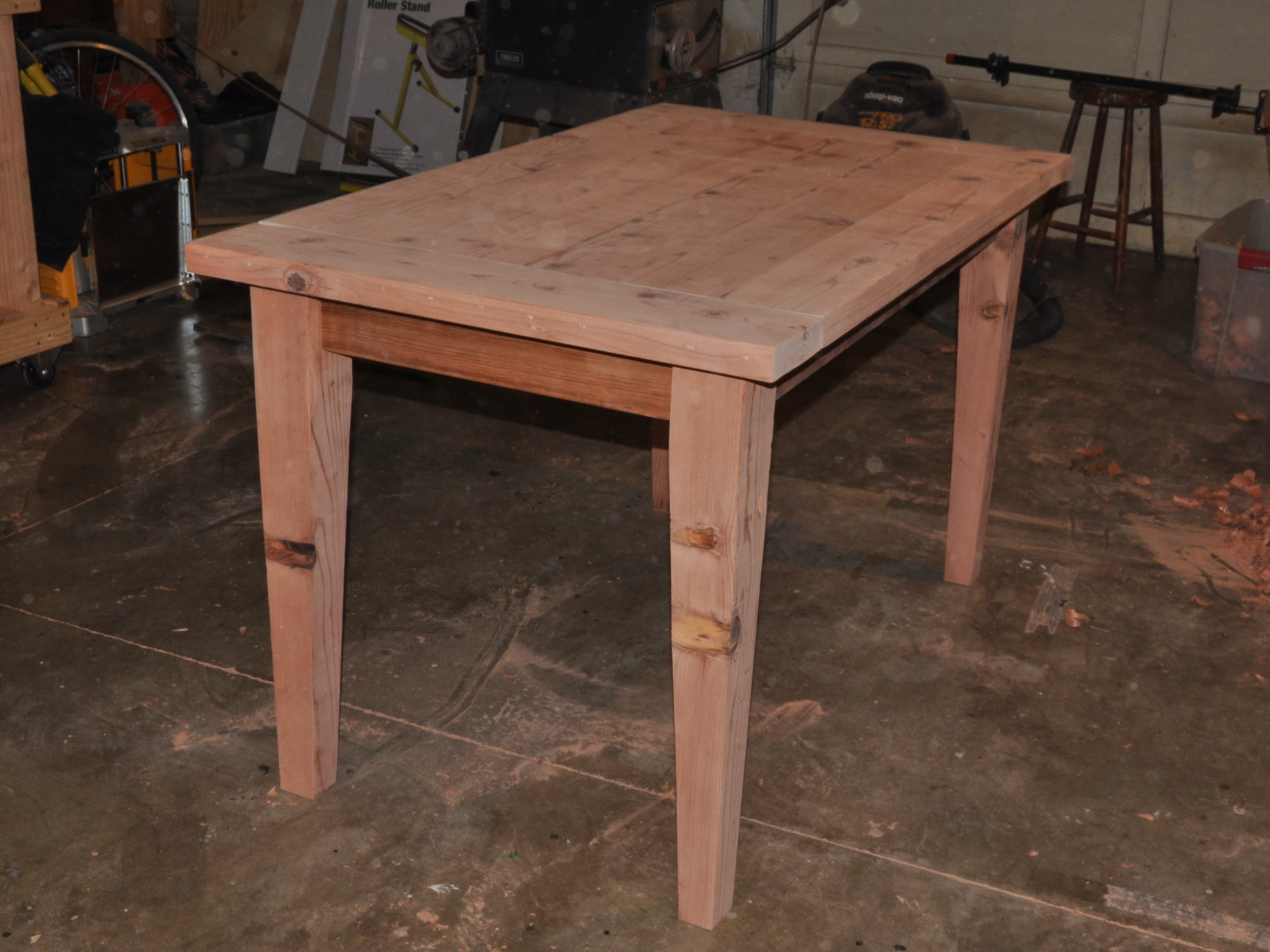Before moving off to college I wanted to build something that would be suitable as a kitchen table and double as my desk for studying. It needed to be sturdy and robust enough to last through college and for the years to come, yet I did not want to build a piece of furniture that would require a moving truck and four guys to move it up a flight of stairs. I decided to make a simple wooden table.
Using mortise and tenon joints in combination with inexpensive kerf-mounted corner brackets, I was able to build an attractive and rigid wooden table that can be disassembled and reassembled all by myself.
The type of wood you use may vary depending on your location, price range, and personal preference. Soft woods like pine and cedar are more common and usually available at most lumberyards as dimensional lumber. Hardwoods, such as maple, cherry, and oak, tend to cost more and may be more difficult to work with, especially when using hand tools.


